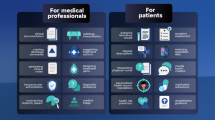Abstract
This paper explores the transformative potential of Large Language Models (LLMs) within the context of surgical oncology and outlines the foundational mechanisms behind these models. LLMs, such as GPT-4, have rapidly evolved in terms of scale and capabilities, with profound implications for their applications in healthcare. These models, rooted in the Generative Pretrained Transformer architecture, exhibit advanced natural language understanding and generation skills. Within surgical oncology, LLMs, when integrated into a Generalist Medical AI (GMAI) framework, hold great promise in offering real-time support throughout the cancer journey. However, alongside these opportunities, this paper underscores the importance of ethical, privacy, and efficacy considerations, especially in light of issues like data drift and potential biases. Collaborative efforts among healthcare providers, AI developers, and regulatory bodies are pivotal in ensuring responsible and effective use of LLMs in surgical oncology, thereby contributing to enhanced patient care and safety. As LLMs continue to advance, they are poised to become indispensable tools in the delivery of high-quality, efficient care in this specialized medical field.
Similar content being viewed by others
References
Ramgopal S, Sanchez-Pinto LN, Horvat CM, Carroll MS, Luo Y, Florin TA (2023) Artificial intelligence-based clinical decision support in pediatrics. Pediatr Res 93(2):334–341. https://doi.org/10.1038/s41390-022-02226-1
Mascagni P, Alapatt D, Sestini L et al (2022) Computer vision in surgery: from potential to clinical value. NPJ Digit Med 5(1):163. https://doi.org/10.1038/s41746-022-00707-5
Zhang Y, Jiang B, Zhang L et al (2022) Lung Nodule detectability of artificial intelligence-assisted CT image reading in lung cancer screening. Curr Med Imaging 18(3):327–334. https://doi.org/10.2174/1573405617666210806125953
Park CW, Seo SW, Kang N et al (2020) Artificial intelligence in health care: current applications and issues. J Korean Med Sci 35(42):e379. https://doi.org/10.3346/jkms.2020.35.e379
Kothari AN (2023) ChatGPT, large language models, and generative AI as future augments of surgical cancer care. Ann Surg Oncol 30(6):3174–3176. https://doi.org/10.1245/s10434-023-13442-2
Thirunavukarasu AJ, Ting DSJ, Elangovan K, Gutierrez L, Tan TF, Ting DSW (2023) Large language models in medicine. Nat Med 29(8):1930–1940. https://doi.org/10.1038/s41591-023-02448-8
Temsah O, Khan SA, Chaiah Y et al (2023) Overview of early ChatGPT’s presence in medical literature: insights from a hybrid literature review by ChatGPT and human experts. Cureus. 15(4):e37281. https://doi.org/10.7759/cureus.37281
Gala D, Makaryus AN (2023) The utility of language models in cardiology: a narrative review of the benefits and concerns of ChatGPT-4. Int J Environ Res Public Health 20(15):6438. https://doi.org/10.3390/ijerph20156438
Egli A (2023) ChatGPT, GPT-4, and other large language models: the next revolution for clinical microbiology? Clin Infect Dis. https://doi.org/10.1093/cid/ciad407
Moor M, Banerjee O, Abad ZSH et al (2023) Foundation models for generalist medical artificial intelligence. Nature. 616(7956):259–265. https://doi.org/10.1038/s41586-023-05881-4
Tiu E, Talius E, Patel P, Langlotz CP, Ng AY, Rajpurkar P (2022) Expert-level detection of pathologies from unannotated chest X-ray images via self-supervised learning. Nat Biomed Eng 6(12):1399–1406. https://doi.org/10.1038/s41551-022-00936-9
Xu L, Sanders L, Li K, Chow JCL (2021) Chatbot for health care and oncology applications using artificial intelligence and machine learning: systematic review. JMIR Cancer 7(4):e27850. https://doi.org/10.2196/27850
Sahiner B, Chen W, Samala RK, Petrick N (2023) Data drift in medical machine learning: implications and potential remedies. Br J Radiol 96:20220878. https://doi.org/10.1259/bjr.20220878
Author information
Authors and Affiliations
Corresponding author
Additional information
Disclosures
Dr. Are serves as an editor for the Indian Journal of Surgical Oncology (IJSO)
Publisher’s Note
Springer Nature remains neutral with regard to jurisdictional claims in published maps and institutional affiliations.
Rights and permissions
Springer Nature or its licensor (e.g. a society or other partner) holds exclusive rights to this article under a publishing agreement with the author(s) or other rightsholder(s); author self-archiving of the accepted manuscript version of this article is solely governed by the terms of such publishing agreement and applicable law.
About this article
Cite this article
Ramamurthi, A., Are, C. & Kothari, A.N. From ChatGPT to Treatment: the Future of AI and Large Language Models in Surgical Oncology. Indian J Surg Oncol 14, 537–539 (2023). https://doi.org/10.1007/s13193-023-01836-3
Received:
Accepted:
Published:
Issue Date:
DOI: https://doi.org/10.1007/s13193-023-01836-3




